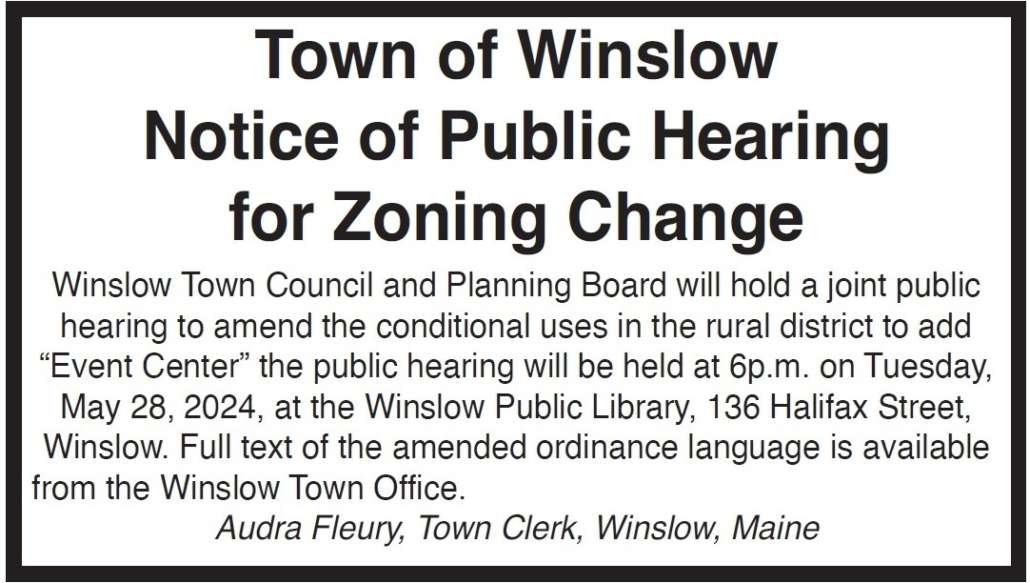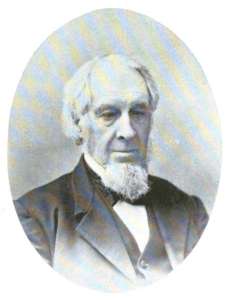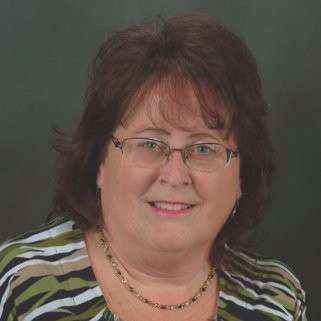Honoring the new mother
/0 Comments/in Community, Holidays/by Gillian Lalimeby Gillian Lalime
A simple yet profound fact of life is that we each owe our lives to mothers. Perhaps this goes without saying but it also extends past the obvious recognition. If you have cream in your morning coffee, it is a mother cow who gave that cream. If you eat eggs it is mother hens who lay those eggs. In languages worldwide the Earth itself is a feminine term, recognizing implicitly that all beings come from Mother Earth. It is said there is nothing so powerful as a mother’s love for her children.
To begin, a mother must first give her own body to create that of her baby’s. The new mother will grow an additional organ to support the developing baby, which could otherwise be registered by her body as a foreign invader since it has different DNA. A baby is first protected and nourished by the placenta while in utero. Just as a mother delivers a baby, she must also deliver the placenta. Many cultures have traditions that recognize and honor the placenta. In ancient Hawai’i the placenta was buried alongside deceased ancestors and was said to have its own spirit. The Maori, of New Zealand, have the same word for ‘land’ and ‘placenta’ and also bury their placenta to establish the first connection between baby and Mother Earth.
Nowadays, just shy of 99 percent of babies are born in a hospital. During this process a vast majority of placentas are swept away and either disposed of or sold. Because of this practice placentas are largely unrecognized for their crucial role as the physical link between Mother and Baby during pregnancy. When the umbilical cord is cut it is not the connection between human mother and baby which is lost but rather, it is a separation between the baby and placenta. Therefore the name ‘First Mother’ is given to this organ by some midwives birthworkers.
To recognize the metamorphosis that is the shift from Maiden to Mother, the Diné, or Navajo Nation, has a Mother’s Blessing ceremony. The Mother’s Blessing is different from a baby shower in that it focuses on honoring and celebrating the woman about to give birth rather than the baby soon to arrive. It is a sacred coming together of women which honors the physical, mental, emotional, and spiritual transformation about to take place. When a baby is born, so too, is a Mother.
One way of estimating a society’s value of mothers could be measured through how a new mother is supported during their maternity leave. Here in the United States the average maternity leave for working moms is around ten weeks, largely unpaid. Out of that time around ten days are covered by built-up sick leave while another 12 days are covered by paid time off. Maine has an average of ten weeks unpaid maternity leave. How does this compare to other societies? A book called The Fourth Trimester examines postpartum care across the globe.
In China traditions rule that soon-to-birth women are not even allowed to stay in their own homes. Their removal ensures new moms will not participate in day-to-day household chores. They are instructed by aunties, sisters, and grandmothers to hold a period of Zou yue zi or “sitting in” for the acute postpartum time, where they are waited on by surrounding women.
In India the first five to seven weeks postpartum is referred to as the ‘Sacred Window’. Apparently the saying goes “fifteen days in the bed, fifteen days on the bed, fifteen days near the bed”. Traditions such as drinking only warm liquids like teas and broth, eating soft, easily-digestible soups, and resting the eyes are all prescriptions for a new mother, whose body is in a state of repair and needs deep rest and nourishment.
In Mexico a ‘Closing of the Bones’ ceremony takes place 40 days postpartum. Women are often supported in gently massaging and wrapping their bellies to increase repair and support the organs in returning to normal positioning after almost ten months of pregnancy.
In each of these traditions it takes a minimum of 40 days for the female body to reconfigure rest and recover from the enormous task of pregnancy, labor, and birth. The Sacred Window also recognizes and honors the bond that happens between mother and baby, or the mother-baby dyad. The days and weeks immediately following birth are a time for the new baby to adjust and integrate into a world of bright light, loud sound, and gravity. It is a tender time for both mother and baby and as such – should not be rushed. Recommendations from traditions worldwide during this ‘fourth trimester’ period are: Rest, Nourishment, Warmth, Connection, Bodywork, and Nature.
With this knowledge a question arises: What can we do to actively recognize, honor, witness, and thank the mothers in our lives?
Maybe we cook them a nourishing meal. Perhaps we let them sleep in or take a nap, go for a walk in nature or sit quietly with a book. We might offer to brew a cup of tea or give them a massage. Maybe all a mother wants is an hour of quiet time to do whatever she pleases or nothing at all. It might be lending a hand in the garden or yard. Maybe it’s doing the dishes or cleaning the bathroom. And, of course, each day we can be grateful for all that a mother gives.
Article Information Sources:
Photo: https://seekingheavenlymother.com/wp-content/uploads/2020/05/mother-earth.jpg
Paragraph 2: https://parentsguidecordblood.org/en/news/honoring-placenta-different-cultures
Paragraph 3: https://www.ncbi.nlm.nih.ov/sites/books/NBK555484/
Paragraph 5: ZerotoThree.org, Annuity.org,
Vassalboro select board looks at VSD finances in hour-long discussion
/0 Comments/in News, Vassalboro/by Mary Grow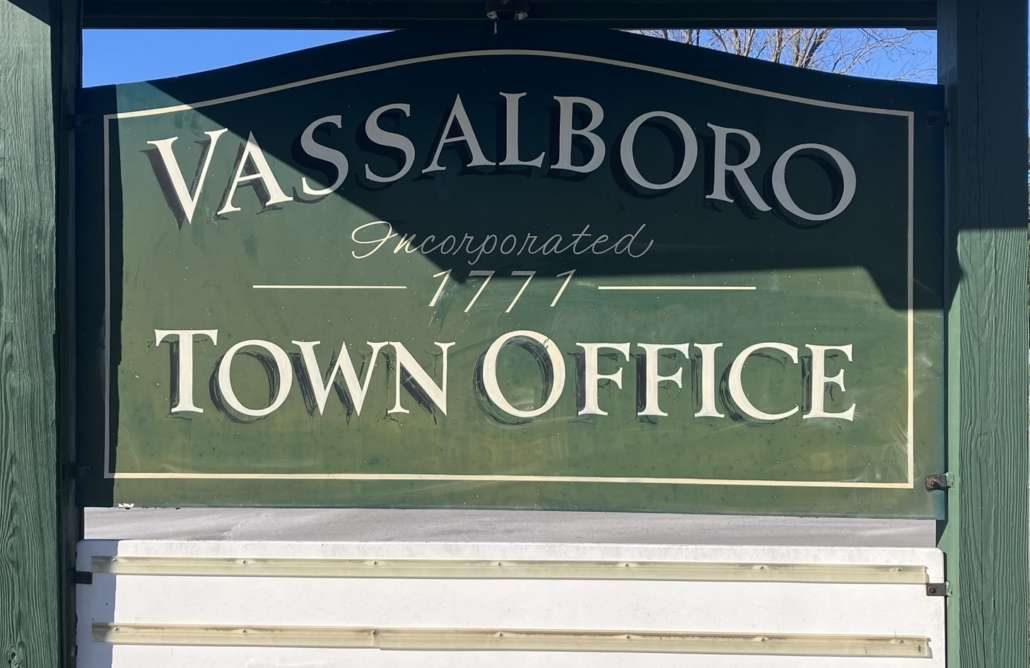 by Mary Grow
by Mary Grow
The May 2 Vassalboro select board meeting featured an hour-long discussion among board members, Town Manager Aaron Miller, Vassalboro Sanitary District trustees and Megan McDonough and other VSD customers, with frequent references to information supplied by or to be sought from attorneys.
The goal is to find ways to manage VSD finances, especially repayment of the debt from connecting the Vassalboro sewer system to Winslow, without making already-high sewer bills even higher.
NOTE: The May 2 Vassalboro select board meeting again included an hour-long executive session with the town attorney, during which the recording of the meeting shows the empty meeting room. After a little more than two-and-a-half hours from the beginning of the meeting, board members returned for another quarter of an hour.
The agenda on the town website, www.vassalboro.net, includes a 29-page document titled “Outline of May 2 VSD-TIF-Discussion.pdf,” available for viewing or downloading.
The VSD serves about 200 of Vassalboro’s about 2,700 households, select board chairman Chris French said. Its lines run along Route 32 (Main Street) from East Vassalboro through North Vassalboro to the Winslow line, and along some side streets off Main Street.
The first topic was whether some of Vassalboro’s Tax Increment Financing (TIF) funds could be allocated to the debt repayment. Miller and select board member Frederick “Rick” Denico, Jr., said Vassalboro’s TIF document says money must be spent in town; but they have not been able to get from VSD trustees an accurate figure on what proportion of the lines is in Vassalboro and what proportion is in Winslow.
Engineer Richard Green, representing the consultant that operates the VSD system, said the question shows a lack of understanding of how funding agencies work. Funds are allocated by purpose, not by geography, he said.
After more discussion of legal advice, TIF requirements, the difference between construction and debt service and related topics, Green said he could provide the information town officials initially requested in February.
Miller and select board members agreed they still need the town auditor’s input. A meeting of town and VSD officials and the auditor is tentatively scheduled for the end of May.
A second issue was how VSD trustees are chosen. Denico pointed out that the VSD charter allowing board members to elect new members contradicts state law.
State law, he and Miller said, requires an open election by sanitary district residents; they cited Title 38, Chapter 1105, in the Maine Revised Statutes. Denico said the town would cover the cost of VSD elections along with municipal election costs.
Trustee Rebecca Goodrich said VSD’s attorney thought the charter did not need amending. She planned to talk with the attorney again the next day.
After their executive session with the town attorney later in the meeting, select board members voted unanimously to ask the trustees to change their method of election as soon as possible.
The third major topic was other funding sources. Select board members suggested two: joining the Kennebec Valley Council of Governments to get grant-writing assistance, and creating housing districts to encourage residential (and associated commercial) growth in North and East Vassalboro, so more sewer users would share the costs.
McDonough urged acceptance of both ideas. Neither would provide prompt relief, everyone agreed.
The May 2 select board meeting began with a short presentation by Matthew Weaver, of Damariscotta-based First National Wealth Management, who said Vassalboro’s investments are doing well. The conservative investment portfolio had an overall return rate of 9.66 percent in the previous year, he said.
The other major topic for which select board members had time before the executive session was review of Miller’s draft warrant for the June 3 and June 11 town meeting. Select board members suggested minor changes.
After the executive session, Miller summarized a Delta Ambulance report for the first three months of 2024. The service responded to 97 percent of Vassalboro’s 911 calls, a total of 117; in 19 percent of the calls, no one was transported (and Medicare did not reimburse Delta for the call). Average response time was 14 minutes, 15 seconds.
Board members unanimously nominated Miller to serve another term on the Maine Municipal Association’s Legislative Policy Committee.
The next regular Vassalboro select board meeting is scheduled for Thursday evening, May 16. Two topics postponed from May 2 are likely to be on the agenda: review of plans for the transfer station redesign, and updates to the town personnel policy.
PLATTER PERSPECTIVE: Hans Schmidt-Isserstedt
/0 Comments/in Platter Perspective/by Peter Cates by Peter Cates
by Peter Cates
Hans Schmidt-Isserstedt
As I am writing this on May 5, I wish to pay tribute to conductor Hans Schmidt-Isserstedt who was born on this day 124 years ago and passed away on May 28, 1973, at the age of 73 .
Some background: he recorded a number of 78s for the Telefunken label during the 1930s, worked during most of the Hitler years, yet avoided Nazi party membership; in 1936, for obvious reasons of safety, he sent his Jewish wife and their two sons to live in England and was separated from them until the end of World War II.
He conducted with a clear beat and an astute sense of the beauty and power in a piece of music, and recorded distinguished Beethoven Symphonies 3, 4, 7 and 9 with the Vienna Philharmonic during the 1960s. The 3rd Symphony, better known as the Eroica, had an especially spellbinding quality in its blend of heroic nobility, pulsating rhythmic pacing and melting lyricism rarely equalled by the many other performances in its recording history.
I also highly recommend a Tchaikovsky 5th Symphony from the early 1950s with the Hamburg Radio Orchestra, a recording which I listened to yesterday.
While on the subject of celebrations in May, I wish to point out that May 6 is the 126th birthday of conductor Jascha Horenstein (1898-1973) while May 14 is the 139th of Otto Klemperer (1885-1973); Schmidt-Isserstedt, Horenstein and Klemperer are three of six conductors who died in 1973, the others being Karel Ancerl, Istvan Kertesz and Paul Kletzki. 1973 was a horrible year for the loss of truly great conductors.
May 7 commemorates the birthdays of composers Johannes Brahms (1833-1897) and Peter Ilyich Tchaikovsky (1840-1893). In 1889, Tchaikovsky was in Hamburg, Germany, for a performance of his 5th Symphony. Brahms attended the rehearsal, initially disliked the piece but then grew to like it.
A piece of Brahms that I listened to over the weekend was the Alto Rhapsody that he composed out of his secret love for Julie Schumann, the daughter of fellow composer and mentor Robert Schumann and his wife Clara (1820-1896), an attraction that caused Brahms much inner sorrow, only intensified when Julie became engaged.
The Rhapsody was scored for either mezzo-soprano or contralto, a men’s chorus and orchestra. Brahms told Clara and Julie to consider it a Bridal Song/wedding gift. The recording I listened to was a 1962 Angel LP featuring mezzo soprano Christa Ludwig with Otto Klemperer conducting the Philharmonia Orchestra and Chorus, and a performance of uniquely spellbinding beauty.
A younger friend of Brahms was conductor Felix Weingartner who recorded the composer’s 4 Symphonies along with Beethoven’s 9 on 78s over a 15-year period from 1925 to 1940. A particular favorite is his interpretation of Beethoven’s 5th which I have played several times since July. Weingartner died at the age of 79, on May 7, 1942.
On May 7, 1747, the 62-year-old composer Johann Sebastian Bach arrived in Potsdam, Germany, at the expressed invitation of Frederick the Great to perform for the Emperor, himself a composer and musician of considerable talent. The visit resulted in two masterpieces from the composer before he died in 1750 – the Musical Offering and the unfinished, sublimely inspired Art of the Fugue.
The above music and performances can be heard via YouTube.
Up and down the Kennebec Valley: Eli & Sybil Jones, Mary Hoxie Jones
/0 Comments/in China, Local History, Up and Down the Kennebec Valley/by Mary Growby Mary Grow
From Rufus Matthew Jones, your writer goes backward and then forward in the Jones family.
Rufus Jones was the nephew of Eli Jones and his wife Sybil (Jones) Jones, well-known Quaker missionaries. Rufus and Elizabeth (Cadbury) Jones’ daughter, Mary Hoxie Jones, born almost a century later than Eli Jones, was a historian and poet.
* * * * * *
Eli Jones (March 12, 1807- Feb. 2, 1890) was Abel and Susannah Jones’ oldest son. According to his nephew’s 1889 biography, Eli and Sybil Jones: Their Life and Work, his formal education was limited to China’s one-room schools and three months at the Friends School, in Providence, Rhode Island, in 1827.
Despite a speech impediment, Rufus Jones wrote, his uncle spoke in Friends meetings from an early age, in China and in Providence. Home from Providence, he helped organize, and became secretary of a local branch of the Sons of Temperance; and helped organize the still-active South China public library.
Rufus commented that when Eli took on these community projects, he had “barely become a full-fledged citizen” and had no family example to follow. The explanation, Rufus wrote, was that “there was something in him which forbade rest and inaction” when the inner spirit presented a task.
In addition to working on the family farm, Eli helped run mills in China and Albion.
In 1833, he married Sybil Jones (Feb. 28, 1808 – Dec. 4, 1873), born in Brunswick and living with her parents in Augusta. Her nephew described her (in his chapter on the Friends in Henry Kingsbury’s Kennebec County history) as physically frail, but with “a poetic soul” and a “beautiful, melodious voice and a flow of suitable words to give utterance to the thought which seemed to come to her by inspiration.”
Sybil attended the Providence Friends School in 1824-25, and worked as a teacher. She wrote poetry; much of it she destroyed, and Rufus observed that what survived was often “tinged with thoughts of death and the grave.”
Eli and Sybil lived in South China until they moved into their own house at Dirigo in or after 1833 (sources differ). The house, still standing on the south side of what is now Route 3 at the Dirigo Road intersection, is described as a north-facing, L-shaped story-and-a-half wooden Cape on a granite foundation. It has been on the National Register of Historic Places since March 22, 1984.
The couple traveled over much of the world, in horse-drawn carriages and wagons, on small sailboats and large steamboats and on the backs of donkeys, spreading Quaker beliefs. Despite her health issues, described by one source as serious back problems, Sybil was often the one who felt called to these missions.
Their first trip was to Nova Scotia and New Brunswick in 1840. Their first overseas mission was to Liberia in 1850. In 1852 and 1853 they visited half a dozen northern European countries; in the spring of 1854 they were in southern France.
After their oldest son’s death in the Civil War (see below), Sybil spent time in Philadelphia and Washington, D.C. hospitals nursing wounded soldiers. Rufus estimated 30,000 men heard her message. After President Abraham Lincoln’s assassination on April 15, 1865, she twice visited his widow to offer comfort.
Sybil’s last mission, a multi-year trip to England, France and the Middle East, beginning in 1867, led to the founding of Friends’ missions on Mount Lebanon and in Ramallah, the latter named the Eli and Sybil Jones Mission. (Your writer found on line a history of the Friends in Ramallah, written in 2016 by Maia Carter Hallward and titled The Ramallah Friends Meeting: Examining 100 Years of Peace and Justice Work, in Quaker Religious Thought: Vol. 127.)
The first of Eli and Sybil’s five children, James Parnell Jones (1835 – 1864), is locally famous as “the fighting Quaker.” Enlisting in the Seventh Maine Volunteers, he was killed July 12, 1864, at Crystal Springs, near Washington, D. C.
The younger children were Sybil Narcissa (1839 – 1903); Richard Mott (1843 – 1917; his son, Charles Richard Jacob, was Rufus’s close friend for many years); Susan Tabor (1847 – 1913, who lived with her father from his return to China until his death) and Eli Grellet (1850 – 1933 or 1934).
Between foreign trips, Eli was active in town affairs. In addition to the temperance society and the South China library, he helped start Erskine Academy, in South China (in 1883; he was president of the first board of trustees) and held official town positions.
The China bicentennial history says the latter included an undated term as liquor agent, given by state law “a monopoly on the distribution of alcoholic beverages.” The history comments that while he was liquor agent, “China had a dry year.”
Maine had enough temperance advocates in the mid-1800s to persuade the state legislature to enact a prohibition law in 1850. Rufus wrote that many people thought it insufficiently enforced.
China voters hoped to improve enforcement, he said, when, in 1854, they chose Eli Jones their representative to the Maine legislature “by a large majority over two other candidates.” (Though his nephew referred to Eli as a candidate, it is not clear that he was one: Rufus wrote that his election was “wholly unexpected,” and he had been working to elect one of the others.)
Because Quakers follow Jesus’ admonition not to swear oaths (in Matthew 5:34-37), Eli did not participate when the Governor administered the oath of office to the legislators. He stood separately to affirm that he would do his job.
Eli’s committee assignments included the committee on temperance. Rufus wrote that his uncle “seldom spoke, most of his work being in the committee.”
Fellow legislators devised a trick to make the pacifist Quaker speak: they unanimously appointed him major-general in command of a division of the state militia.
Eli rode home to Dirigo that evening and consulted until late with family and friends. When he returned to Augusta, sleepless, the next day, he found almost all the legislators from both houses and many city people waiting to hear what he would say.
Rufus reprinted most of his uncle’s speech. Eli said he feared appointing a pacifist Quaker to head the militia was “a little in advance of the times,” despite progress on temperance and on resistance to slavery.
If he was mistaken and the legislature really wanted him to serve, he would, he promised. He would order the troops to ground arms, beat swords into plowshares and spears into pruning-hooks and go home and read the New Testament.
But, believing the legislature was not endorsing such a policy, he would and did decline the appointment.
Rufus wrote that the speech was frequently interrupted by applause and “made a great sensation” not just in Maine, but internationally, being reported in the United States and Great Britain and even in one African newspaper. The intended jest, in his view, let his uncle “preach peace to a very extended audience”; it also gained him increased respect among his fellow lawmakers.
In 1857, Eli helped reopen Oak Grove School, in Vassalboro, after lack of funds closed the high school that had opened in December 1850. He served as principal of the renamed Oak Grove Seminary for a year, the first of 10 men named Jones (including his son Richard, from 1870 to 1874, and his nephew Rufus, from 1889 to 1893) to head the school before 1918. In 1870 and 1871 he was supervisor of schools in China.
Sybil Jones died Dec. 4, 1873, at their Dirigo home. Eli continued to live there with his younger daughter Susan until they returned to South China in 1884, except for two more trips to the Middle East, in 1876 and 1882.
Rufus described his uncle as satisfied with farming, especially fond of and loved by his sheep and other animals; and a lover of all nature, who was happy sitting under a tree watching birds and insects, never knowingly stepping “on a worm or beetle” or killing anything else. He was interested in “fossils and geological specimens.” A frequent and welcome visitor at Quaker meetings throughout the area, he was also a respected speaker at China’s town meetings.
Eli Jones died Feb. 2, 1890. According to the Town of China cemetery records (with which Find a Grave disagrees), he and Sibyl are buried in Dudley Cemetery, with their oldest son, James Parnell Jones, and their younger daughter, Susan Tabor Jones (identified as Susan L. in the town records).
Dudley Cemetery is on the east side of Dirigo Road a short distance south of Eli and Sybil’s house, farther from the road than Dirigo Friends Cemetery. Family members buried in the Dirigo yard include Eli’s parents, Abel and Susannah Jepson Jones; his sister, Peace; and his brothers, Edwin and Cyrus.
* * * * * *
Rufus and Elizabeth Jones’ only child, Mary Hoxie Jones (Eli Jones’ great-niece), was born July 27, 1904, in Haverford, Pennsylvania, and lived there or in adjoining Bryn Mawr most of her life, spending vacations at Pendle Hill, in China.
From 1916 to 1922, she was a student at the Baldwin School, a private, non-sectarian girls’ school in Bryn Mawr. She graduated from Mount Holyoke College, in South Hadley, Massachusetts, in 1926.
Mary Hoxie Jones was steeped in Quakerism all her life, often traveling abroad with her parents. From 1939 to 1951, she held staff positions with the American Friends Service Committee, and served on its board of directors for many years afterwards.
Her historical writing started with collecting and organizing documents about her family’s history and genealogy. One product was a short biography of her father, published as a pamphlet by the Friends Home Service Committee in 1955, in London.
More general works included a 1937 history of the Friends Service Committee from its founding in 1917, and a 1961 history of New England Friends in the latter half of the 1600s. The first book she dedicated to her father, to his great pleasure.
A series called Pendle Hill Pamphlets included a history of Quaker poets and a collection of notes her father made for his sermons and talks – notes which, she commented, he never appeared to use. Apparently they served to “fix a central idea firmly in his mind” and “as a springboard” for his speeches.
Jones’ work was recognized when Haverford College made her a research associate in Quaker studies in 1962 and awarded her an honorary doctorate in 1985.
Her first published book of poems was Arrows of Desire (1931). Beyond This Stone came out in 1965, Mosaic of the Sun in 1975.
The first poem in Beyond This Stone is a light-hearted tribute to her father on his 70th birthday, Jan. 25, 1933. Before reciting some of the many greetings he received, she began:
I wish you much felicity
Now that you have reached seventy.
After five more near-rhymes, including “postal” with “Pentecostal,” “thorough” with “Vassalboro” and “Kansas” with “pansies,” the first stanza ends:
Or who else could maneuver
A message out of Herbert Hoover?
Many poems express Jones’ appreciation of nature. Others show her dislike of war and of modern inventions, including the atom bomb; machines that destroy nature to build highways; man-made “hardware in the sky” and flights to the moon while the local trains don’t run reliably; and Christmas that has become “a frantic helter-skelter” and a “worry” when it should be “a stillness.”
Wild Geese combines the themes.
The wild geese leave the north and fly
In V formation through the sky.
Honking above the pines and lake
I hear them, far away and high,
And hearing them my heart will break
Knowing that man has fashioned wings
To fly, like birds, great silver things.
Each carrying bombs, the planes go forth,
A wedge of death, as autumn brings
The wild geese flying from the north.
Main sources
Beard, Frank A., and Roger G. Reed, National Register of Historic Places Inventory – Nomination Form Eli and Sybil Jones House, February 1984.
Grow, Mary M., China Maine Bicentennial History including 1984 revisions (1984).
Jones, Rufus M. Eli and Sybil Jones (1889).
Websites, miscellaneous.
Correction to Meeting House location
Your writer was probably in error when, in the April 25 article on Rufus Jones, she cited the source that said the family drove from South China north (on what is now Route 202) to the Pond Meeting House twice weekly, while he was a child in the 1860s and 1870s. Elizabeth Gray Vining, in Friend of Life: The Biography of Rufus M. Jones, wrote that his family worshipped at the Friends meeting house at Dirigo.
A reference in Jones’ Finding the Trail of Life to the road through the woods to meeting as “hilly” supports Vining: current Route 3 east to Dirigo is hillier than Route 32 north to Pond Meeting House.
The Dirigo meeting house was abandoned in 1884, when Friends meeting moved to South China Village. Your writer found no information on how long it had been used.
Two area students named to Maine Academic team
/0 Comments/in Fairfield, Hinckley, Palermo, School News/by Website Editor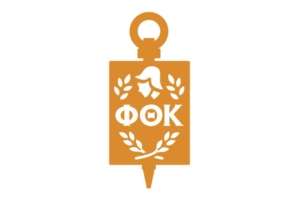 Two area community college students have been named to the All-Maine Academic Team in recognition of their outstanding academic achievement, leadership, and service.
Two area community college students have been named to the All-Maine Academic Team in recognition of their outstanding academic achievement, leadership, and service.
The students receiving the award are:
Kiera Clark, Skowhegan, Kennebec Valley Community College, in Fairfield/Hinckley.
Luz Maria Seda Libby, Palermo, Kennebec Valley Community College.
In addition, Catalina Fernandez-Grant (KVCC) has been named Maine New Century Scholars for earning the highest scores in the state on their All-USA Academic Team applications.
Fernandez-Grant is the 2024 Maine New Century Workforce Pathway Scholar and will receive a $1,500 scholarship.
The All-Maine Academic Team is a program of Phi Theta Kappa, an international honor society for two-year colleges. Students are nominated and selected for the team by their college.
OBITUARIES for Thursday, May 9, 2024
/1 Comment/in Obituaries/by Website EditorEDWARD W. LACOMBE
 SPRING HILL, Florida – Edward W. Lacombe, 88, of Spring Hill, Florida and Winslow, passed away on Tuesday, April 9, 2024. He was born in Waterville on August 29, 1935, to George and Leona (Paulin) Lacombe.
SPRING HILL, Florida – Edward W. Lacombe, 88, of Spring Hill, Florida and Winslow, passed away on Tuesday, April 9, 2024. He was born in Waterville on August 29, 1935, to George and Leona (Paulin) Lacombe.
Eddie graduated from Waterville High School, class of 1954.
He served in the U.S. Coast Guard from 1954-1958. He was employed as a circulation manager with the Waterville Morning Sentinel for 37 years. He was a lifetime member of Waterville Elks Lodge #905.
He enjoyed hunting, fishing, snowmobiling, calling Bingo, playing cards, camping and going on cruises. One of his passions was splitting firewood. He also enjoyed following his New England sports teams along with the UConn girls basketball team.
He was predeceased by his parents; his wife of 47 years, Betty (Bernard) Lacombe; his sister, Rita (Lacombe) Boucher, several brothers-in-law and sisters-in-law.
He is survived by his longtime partner, Phyllis Kreft, of Spring Hill, Florida; sons John and wife Michele, of Winslow, James, of Sabattus, and Jeffrey, of Oakland; grandchildren Krystal and husband Neal Mecum, of North Yarmouth, Hillary Lacombe and partner Greg Rosshirt, of Newington, Connecticut, and Dustin and wife Sarah Lacombe, of Brunswick; several grandchildren; several nieces and nephews.
There will be a funeral service at St. John the Baptist Catholic Church, 26 Monument St., Winslow on Saturday, May 11, at 10 a.m.
ELIZABETH B. REUTHE
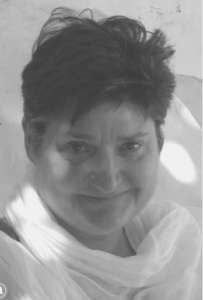 VASSALBORO – Elizabeth Bonola Reuthe, 77, passed away on Monday, April 22, 2024, at her home on Cross Hill Road. Elizabeth was born in New Britain, Connecticut, in August 1946, the eldest child of Walter and Elizabeth (Baranowski) Bonola.
VASSALBORO – Elizabeth Bonola Reuthe, 77, passed away on Monday, April 22, 2024, at her home on Cross Hill Road. Elizabeth was born in New Britain, Connecticut, in August 1946, the eldest child of Walter and Elizabeth (Baranowski) Bonola.
Throughout her cancer diagnosis and treatment Elizabeth showed dignity and courage, an inspiration to all who knew her. She planned her own conscious death enlightening others to the concept and ensuring she would pass the way she lived, on her own terms.
She married the love of her life, John Reuthe, of South Bend, Indiana, in August 1982 and helped raise John’s young children Petra and Eric, first in Rhode Island, then Vermont and after 1986 on their farm, in Vassalboro.
Elizabeth earned her college education at the University of Pittsburgh and Indiana University, in South Bend, where she completed her MBA in 1977. Soon after, in her early 30s, Elizabeth broke the glass ceiling when she began working as plant manager for Bendix Brake and Steering Division. For nearly 20 years she was in senior leadership roles at Bendix Corporation including Fram Filters and Autolight Sparkplugs; the Digital Equipment Corp., in Augusta; and IDEXX Laboratories, in Westbrook.
Her journey was propelled beyond the corporate horizon after she studied at the Gestalt Institute and Process Work Institute and received a MA in Conflict Facilitation and Organizational Change. She then established her consulting firm, Elizabeth Reuthe Associates and worked with clients from all over the world. Among her noteworthy work was facilitating groups in New York City after 911, and for those seeking peace in the Middle East, Ukraine and India. Elizabeth never stopped her quest for knowledge, learning and human connection – she was always seeking new opportunities and relationships.
In 2001, following her younger sister Elaine’s death at the age of 52, Elizabeth wisely took time off to take care of herself and to examine what she hoped for in her own future, but even then she was not idle. She prepared gourmet foods, raised chickens, made maple syrup, took a Master Gardener’s course and became a Reiki Master. To this day the Reuthe’s farm is lavishly adorned with flower gardens designed by Elizabeth while taking some “time off.” During that transition Elizabeth and John joined the Quaker community, in Vassalboro, which blessed them with spiritual grounding and new “Friends” who have been a great source of comfort and strength.
Elizabeth spent a lifetime of learning, personal growth and mentoring others including family, friends, neighbors and strangers that quickly became friends. She was energized by other’s successes and growth. Her ability to work with diverse groups from throughout the world was exemplary – sometimes in situations that were dangerous and inflammatory. She also mentored women from all walks of life, including some of the “untouchables” in India. Seeing women whom she had supported reach their own levels of success gave Elizabeth great joy and a sense of fulfillment.
The many strangers that became friends found themselves among neighbors and family who were welcomed into the Reuthe’s beloved Thanksgiving Farm on Cross Hill Road aptly named for the thanks that the Reuthe clan always strives to give. There was comfort, beauty and kinship found at the Thanksgiving Farm table which was plentifully laden with food and drink and a house filled with lively conversation and laughter. In between hosting, John and Elizabeth enjoyed traveling all over the world to places such as Australia, India, New Zealand, Russia, the Middle East and Europe. Cruises on the Mary Day off the coast of Maine or voyages across the Atlantic with a group of fellow voyagers turned friends are among the adventures they have enjoyed over the last several years – the final one a few short months ago when Elizabeth’s health was failing but her zest for life was still soaring.
Elizabeth was predeceased by her parents; her sister, Elaine and nephew, Michael Bonola.
She is survived by her husband, John; daughter, Petra, husband Jim Kennedy and their children Parker, Liam and Spencer, of Connecticut; son, Eric and his children Camden, Willow and Griffin, of Tennessee; brother, Walter Bonola, of Connecticut; and several nieces and nephews.
Condolences may be sent to John Reuthe, c/o Friends Meeting House, 48 South Stanley Hill Rd., Vassalboro, ME 04989.
A memorial service will be held July 6 at the Vassalboro Friends Meeting House, time to be announced.
The family would appreciate donations made in Elizabeth’s memory to either of these organizations: The Harold Alfond Center for Cancer Care expansion campaign with “HACCC Capital Expansion” noted in the check memo line, mail to MaineGeneral Health, P.O. Box 828, Waterville, ME 04903, or to Right Sharing for World Resources, which partners with women in Kenya, India, and Sierra Leone in support of their families and to transform their communities. Donations to Right Sharing should be mailed to, 101 Quaker Hill Dr.,, Richmond, IN 47374, or online via, rswr.org/share-your-abundance.
RONALD A. EMERY
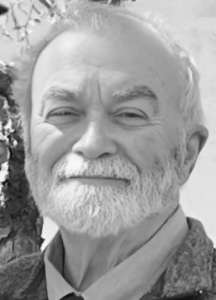 CHINA – Ronald Abbott Emery, 78, of China, died on Wednesday, April 24, 2024, at the Alfond Center for Health, in Augusta.
CHINA – Ronald Abbott Emery, 78, of China, died on Wednesday, April 24, 2024, at the Alfond Center for Health, in Augusta.
Ron was born in Hartland on Oct. 30, 1945, to Dulcie (Boone) and Charles Emery.
Ron lived a full life, and was beloved by his family, his adopted hometown of China, and members of several organizations of which he was a dedicated longtime member. He leaves behind a legacy of kindness, grace, and dedication to a life of service.
He lost his father when he was four years old. He and his two brothers, Ralph and Jeff, were raised by their mother and her father, Murray Boone. Ron attended one-room schools in Dixmont and then spent two years of high school in Carmel before graduating from Hermon High School in 1964. Ron loved playing baseball and basketball during those early years and was an accomplished middle infielder and pitcher.
He earned an associate’s degree from Beal Business College and his bachelor’s degree from Husson College, in Bangor. He earned money to pay for college by cutting pulpwood on the family property in Dixmont.
Ron joined the Maine Air National Guard in 1965 and spent a summer at Keesler AFB, in Biloxi, Mississippi, attending an aircraft radio repair school. He remained in the Guard, retiring in 1990 with 25 years of service.
In 1964, Ron took a part-time job as an engineering aide with the Maine Department of Transportation. This was the beginning of a long and storied career. Ron moved into computer programming and was responsible for the development of the Transportation Integrated Network Information System (TINIS) database, a unified system for managing highway, bridge, and accident records across the state. Ron was able to attend a number of annual traffic conferences at the University of North Carolina because of his work on TINIS, which he always enjoyed. Ron purchased a house in China in 1978, where he lived for the rest of his life.
Ron was raised to the sublime degree of Master Mason, in Archon Lodge #75, in Dixmont in 1967, and was an active member for 56 years. He was involved with the Anah Shrine, Scottish Rites Valleys, of Augusta and Portland, and was an affiliated member of Dirigo Lodge #104, in Weeks Mills. Ron was instrumental in keeping the 11th Masonic District well informed for over 40 years with the Trestle Board, a monthly newsletter that he printed and mailed to Masons in Maine and across the U.S.
In February 1987 Ron met the love of his life, Helen (Downs) Emery, and her two-year-old son, Mike. Ron was smitten, and he and Helen were married on November 28, 1987. Their son, Mason, was born in October 1988. Family meant everything to Ron, and he cherished having a family with whom to celebrate. He was a devoted husband and father, which led to Ron discovering a passion for Scouting. Ron became an Assistant Scoutmaster of Troop #479 when his boys joined the troop, and he continued to serve the troop with his friend, Scott Adams, long after their sons had moved on. Ron was a Scout leader for 28 years, during which time 44 Scouts earned their Eagle rank with Troop #479.
Ron was an active member of the South China Community Church for over 30 years. In addition to being the longtime assistant treasurer, he was renowned for often giving the children’s message, and he was a fixture in the kitchen at the church’s monthly turkey pie suppers. He also served as the regular master of ceremonies for the annual Scout Sunday at the China Baptist Church. His church activities showed the essence of Ron — a gentle soul who dearly loved people, and who especially cared for children as the most vulnerable members of the community. Ron’s own childhood was tough but filled with love, and he made it his mission to ensure that children who were his neighbors, extended family, or fellow congregants felt love in their life, and that they had at least one adult who saw them as people and genuinely cared about them.
In 2001, Ron received the David H. Stevens Award, MaineDOT’s highest honor. The Stevens Award is presented each year to a MaineDOT employee for their outstanding contribution to transportation excellence in the State of Maine. Though he had 37 years of service when he received this award, Ron was not nearly finished. He continued his service to the state until finally retiring in 2021 at the age of 75, having supported MaineDOT for 57 years.
Ron faced multiple medical maladies as he moved into retirement, culminating with his diagnosis of stage four esophageal cancer in early 2023. Despite this, he continued to serve the Scouts, the Masons, and his church in the capacities he had long been serving, continuing in some of these up until his final week. Illness could not dampen his spirit, and he took time to make lasting memories with his family, including welcoming his beloved first grandchild, Margaret, into the world in December 2023. Ron took nothing for granted and appreciated every moment he had on Earth.
Ron was predeceased by his parents; and by his brother, Ralph Emery.
He is survived by his wife, Helen (Downs) Emery; his sons, Mike Emery and his partner Tekia Cox, Mason Emery, his partner Tesse Rau, and their daughter Margaret; his brother, Jeff Emery and his wife Lee; his nephew, Ben Emery, his wife Kait, and their daughter Quinn; his sisters-in-law, Song Emery and her partner Ben Wilcox, and his sister-in-law, Carrie Doyon and her husband Eric; his niece Julie Emery; his nephew Alan Emery and his daughter, Amelia; his brother-in-law, Herb Downs and his wife Stacey, his sisters-in-law, Liz Downs, an Carrie Doyon and her husband Eric; his niece, Mary Dufour and her husband EJ; his brother-in-law, Harold Downs, his sister-in-law, Lorraine Downs; and several cousins, nieces, and nephews.
Ron’s funeral service will be at 2:30 p.m., on Saturday, May 11, at the South China Community Church, 246 Village St., South China. A private family burial with full military honors will be held at the Central Maine Veterans Memorial Cemetery, in Augusta.
Arrangements and guidance are entrusted with Staples Funeral Home and Cremation Care, 53 Brunswick Avenue, Gardiner. Condolences, memories, and photos may be shared with the family on the obituary page of the Staples Funeral Home website, http://www.staplesfuneralhome.com.
In lieu of flowers, donations may be made to Bomazeen Old-Timers, ℅ Scott Adams, P.O. Box 6134, China Village, ME 04926-0134; South China Community Church, 246 Village St., South China, ME 04358; or Kennebec Valley Humane Society, 168 Leighton Rd., Augusta, ME 04330.
JOHN B. WHITTEN
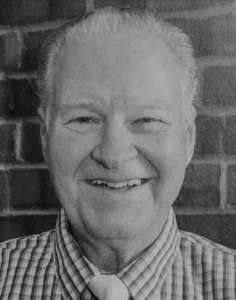 OAKLAND – John B. Whitten, 80, passed away on Wednesday, April 24, 2024, in Augusta. He was born July 2, 1943, in Portland, the son of Wendell and Hariet Whitten, of Scarborough.
OAKLAND – John B. Whitten, 80, passed away on Wednesday, April 24, 2024, in Augusta. He was born July 2, 1943, in Portland, the son of Wendell and Hariet Whitten, of Scarborough.
He graduated high school in 1961 and earned a B.S. in education in music from Gorham State Teachers College in 1965. He would later earn his master’s degree in music administration from the university of Southern Maine in 1985.
On July 27, 1968 he married Gale (Kelley), of Jonesport, and together they raised their children in Harrington.
John spent his career in music studying trumpet-first with studio musician Don Spear and with Band Leader Don Doane (Maine’s premier jazz trombonist). He taught music in Winslow, Jonesport and finally in Harrington, at Narraguagus High School, and M.S.D.A. #37 for 37 years. While with Narraguagus High School, he combined teaching band, chorus and beginner music lessons with serving his country and state, as a member of the 282nd Army Band, at Ft. Jackson, South Carolina, and the 195th Maine Army National Guard Band, of Bangor.
He was president of the Washington County Teachers Association and twice president for the M.S.D.A. #37 Teachers Association. He also served as a member of the Harrington Volunteer Ambulance Crew and performed military honors for veterans in the area, as a bugler. He was a member of the Tuscon Lodge #106 A.F.A.M., in Addison, and visited Sabasticook Lodge, in Oakland, and Siloam Lodge, in Fairfield. His grandson Erik is a third generation Mason on both sides. He exported blueberries for Cherryfield Foods Inc. for nearly 20 years and later worked for Charlie Renski.
John enjoyed carpentry, gardening, ham radio (A.R.S.KA1HRV), reading, supporting the New York Giants ad visiting with his family. Later he joined the Waterville Bourque-Lanigan American Legion Post #5 and worked last year with the Maine Education Association testifying at the State House in support of retired educators.
Almost 37 years ago in 1987, John had his first triple bypass in Portland six days before his 44th birthday after Dr. Kramer had told him, “If you don’t want cholesterol problems, choose the right parents!” He lived Heart Smart after with no egg yolks of red meat and later limited salt. In 2017, he had his first heart attack with new house building problems, in Oakland, after living in Harrington for 50 years. Dr. Estrada’s team and later on, Dr. Vasaiwala’s, saved him in Portland, again. Last May, John had his final procedure there and Dr. Kramer visited him in recovery after he had been able to live another 36 years beyond their first meeting.
His children surprised him with a fabulous 80th birthday party in Waterville last July 2 that he thoroughly enjoyed and wanted to be remembered at his party. He left this message,” We are where we need to be and we follow God’s plan, as each of us is in God’s Hands!”
John is survived by his wife, Gale, of 55 years; their twin daughters Ellyn and her husband Derik Smith, of Presque Isle, and their children Erik and his wife Mykaela, of Old Town, and Adelle, of Presque Isle; Lynn and her husband Nathan Bustard and their daughter Evelyn, of Benton, and their son Andrew and his wife Erica and their children Alyssa, Sara and Brooke, of Corinna; nephews Robert and Aaron Whitten.
He requested no services, as he wanted to be remembered in life and will go to the ocean eventually.
Arrangements are in the care of Wheeler Funeral Home, Church Street, Oakland, where memories may be shared, and an online register book signed by visiting http://www.lawrybrothers.com
If one wishes, gifts in his memory may be made to the Maine Masonic Charities Foundation or your local music boosters in support of the music Education.
GLORIA J. CASCIO
ALBION – Gloria J. Cascio, 53, died unexpectedly on Friday, April 26, 2024. She was born in Brunswick on October 26, 1970, a daughter of Chester M. Coston, Jr. and Hazel (Pushard) McDougall.
Gloria was a 1990 graduate of Cony High School, in Augusta.
She had been employed for many years at Johnny’s Selected Seeds, in Winlow, working as their lead shipper and receiver.
Gloria’s smile would light up a room. To meet her was to love her. Her husband, children and grandchildren were her whole world. Her heart grew two sizes the day she became a grandmother.
Gloria is survived by her husband, Vincent A. Cascio, of Albion; her parents Chester M. Coston, Jr., of South China, and Hazel McDougall, of Waterville; her children, Seth A. Sutter and his wife Courtney, of South China, Heather L. Sutter and her companion Keith Ward, of Windsor, and Torri S. Gerrard and her husband Mitchel, of Manchester; two brothers, Chester M. Coston, III, of South China, and Wayne H. Coston, of Monmouth; seven grandchildren, Lucas, Wesley, Rayne, Ivy, Maverick, Scarlet and Tessa; as well as several aunts, uncles; nieces, nephews; and cousins.
There will be no public visiting hours. A memorial service will be held on Saturday, June 8, at 11 a.m., at Plummer Funeral Home, Windsor, Chapel, 983 Ridge Rd., Route 32, Windsor. Burial and committal prayers will follow in Dyer Hill Cemetery, Windsor.
Condolences, stories and photos may be shared though the funeral home website at: http://www.plummerfh.com.
The family requests that donations in Gloria’s memory be made to Veterans of Foreign Wars, Post #6924, 246 Main St., Fairfield, ME 04937.
GERALD A. WATSON
 CLINTON – Gerald A. “Bear” Watson, 85, passed away April 26, 2024, at home with his family by his side. He was born in Clinton on March 7, 1939, the son of Myron and Junita (Salisbury) Watson. He attended Clinton High School, graduating in 1957. He enlisted in the U.S Navy and following his graduation, he served a total of six years, most memorably on the aircraft carrier USS Tarawa. He was proud of his military service and the U.S. Flag.
CLINTON – Gerald A. “Bear” Watson, 85, passed away April 26, 2024, at home with his family by his side. He was born in Clinton on March 7, 1939, the son of Myron and Junita (Salisbury) Watson. He attended Clinton High School, graduating in 1957. He enlisted in the U.S Navy and following his graduation, he served a total of six years, most memorably on the aircraft carrier USS Tarawa. He was proud of his military service and the U.S. Flag.
After an honorable discharge, he attended Keene State College, in New Hampshire, graduating with a B.S. in Industrial Education in 1963. He began his career at Lawrence High Schoolf, in Fairfield, and taught Industrial Arts, retiring as Department Head after 35 years. He impacted many students during his teaching career, encouraging them with his quiet manner. He was delighted when former students would visit and talk about their careers and families.
He married Ruth Ann Bowen on September 3, 1960, and together they raised four children. During the summers, he spent much of his time doing renovations and carpentry type work, returning each night to the family camp at Unity Pond, where they shared many years of swimming, boating, fishing, sailing, berry picking, water-skiing and always ended the day with a good meal.
For many years, Bear and Ruth sailed on their friends Bill and Julie Alexander’s schooner Timberwind each summer. A wonderful group of teacher friends enjoyed sailing the coast of Maine and creating lasting memories each year.
Bear loved being in the woods. He was particularly fond of Canaan camp, where he and his brother David spent many happy times with their parents and grandparents. In later years, his own children shared their own memories of hunting, walking in the woods and cutting wood with their dad at Canaan camp.
Bear was a longtime member of the Clinton Lions Club, serving in all positions including King Lion. He was involved in many activities including mechanical pulls, and was proud to be a member of a four-generation Lion family.
There was nothing Bear could not build or repair. He once bought a bushel basket of parts that he built into a snowmobile, Old Yeller. He made Lincoln logs and ice traps as Christmas presents for his kids. Auto body work, plumbing, electrical work, welding, sheet metal and foundry work, auto repairs, machining, rebuilding a 1964 Ford automobile and his 1952 Ford tractor. He restored a 1929 Ford Model A and loved driving it on the back roads of Maine with family in the rumble seat. You name it, he could do it.
Moosehead Lake held a special place in Bear’s heart. From Lily Bay to Rockwood, he caught many fish and enjoyed many cherished family times. He loved to fish, not catch, and release, but catch and eat, enjoying every bite. In his later years, he loved special times on the boat, trips to Pebble Beach, and time spent on the porch on the Moose River.
After retirement, Ruth and Bear bought a condo in Gulfport, Florida, and became snowbirds.
Bear had a special place in his heart for dogs.
Bear was predeceased by his parents; and his brother, David.
He is survived by his wife, Ruth; children Michael (Jody) Watson, Mark (Kim) Watson, Matt (LeeAnn) Watson, Melissa (Rod) Parlin; grandchildren Rachel Watson, Katie Medina, Tashia Watson, Hannah Parlin, Taylor Nutting, Hallee Parlin, Brielle Watson, Brandon Watso; great-grandchildren Parker Rose, Avery, Jackson, Molly, and Harriet.
A celebration of life will be held on Sunday, May 19, from noon to 2 p.m., at Brown Memorial United Methodist Church Fellowship Hall, 36 Church St., Clinton. A private graveside service will be held immediately following for the family.
Arrangements by Direct Cremation of Maine in Belfast.
In lieu of flowers, please do a kind deed for someone in honor of Bear.
JACQUELYN G. BLACK
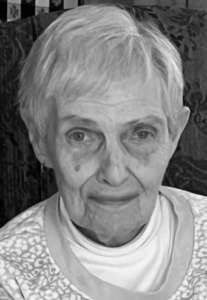 CHINA – Jacquelyn Goddard Black, 88, passed away peacefully at her home Saturday, April 27, 2024. Jackie was born in Waterville on March 12, 1936, daughter of G. Cecil Goddard and Clara (Nevers) Goddard.
CHINA – Jacquelyn Goddard Black, 88, passed away peacefully at her home Saturday, April 27, 2024. Jackie was born in Waterville on March 12, 1936, daughter of G. Cecil Goddard and Clara (Nevers) Goddard.
She attended primary schools in Waterville and attended Oak Grove Coburn and graduated from Waterville High in 1954. She attended Farmington State and Thomas College.
Jackie worked in the family business at Goddard Agency, in Waterville. She also worked for Main Gas, Slender You, and assisted with her daughter’s daycare. Her most rewarding and satisfying job was being a mother, grandmother, and auntie. She enjoyed her children, their friends, and their activities.
Jackie was known for her baked goods at home, at the church, and in the neighborhood. Biscuits, strawberry shortcake, jam and chocolate chip cookies were just some of her specialties.
Jackie was a dedicated nana to Justin and Jayson. She and her husband, Jim Black, never missed a game, school function or birthday. The boys were always supported by her love and presence.
Jackie was an amateur bowler, who bowled at the Waterville Lanes and bowled in the Pro Am. She earned the title: City, State, and New England Champion. Her trophies and plaques are proof of what a proficient bowler she was. It was there that she met her second husband, James A. Black.
Jackie took pride in the in the outside appearance of her home. She worked in her flower beds and mowed her lawn from dawn to dusk. She also could be found shoveling at the first sign of snow. She loved the fresh air and the vigorous exercise.
Some of her pastimes were antiquing and flower shopping with her daughter, watching the Boston Red Sox and Celtics games. She enjoyed discussing the games and players with her son and grandsons.
Jackie was an active member at the Waterville and China Baptist churches. She could always be found in the kitchen after services, helping out. She also participated in the Women’s Bible Study, in China. In her final days she got great pleasure watching the parishioners coming and going.
Jackie was predeceased by her parents, Mr. and Mrs. G. Cecil Goddard; her husband, James A. Black; her daughter, Julie A. Smith, and her brother, Samuel A. Goddard.
She is survived by her son, James G. Smith and fiancée Kathy Cunningham, of Vassalboro; daughter Joanna L. Bearce and husband Jeffrey, of Belgrade; her grandsons Justin M. Bearce and partner Tabitha Doak, of Waterville, Jayson H. Bearce and wife Juli, of Narvarre, Florida; sister, Melissa Ayer, of Shelton, Connecticut; nieces Suzanne Goddard, of China, Rebecca Bean, of Williamsburg, Virginia, Alexandra L. Pierce, of Stratford, Connecticut; great-nephews, and niece Nathan A. Pierce, Stella G. Pierce, and Lukas J. Pierce, also of Stratford, Connecticut.
To honor Jacquelyn’s wishes a private service will be held for family at a later date.
Arrangements are under the direction and care of Gallant Funeral Home, 10 Elm St., Waterville. An online guestbook may be signed, condolences and memories shared at http://www.gallantfh.com.
The family requests those who wish to express sympathy to consider donating to the China Baptist Church in Jacquelyn Black’s name, P.O. Box 6095, China Village, ME 04926.
RENA HARDING
 ALBION – Rena Harding, 101, passed away in her home in Albion, on Saturday, April 27, 2024. Rena was born in Palermo to Leslie E. Bailey and Gertrude (Boynton) Bailey on Oct. 29, 1922. She was the fourth of five children.
ALBION – Rena Harding, 101, passed away in her home in Albion, on Saturday, April 27, 2024. Rena was born in Palermo to Leslie E. Bailey and Gertrude (Boynton) Bailey on Oct. 29, 1922. She was the fourth of five children.
She married her husband, Warren, in May 1942, and together they had four children.
They started a dairy farm in Albion in 1943, where she lived until her death. Rena worked hard her whole life on the farm to provide for her family. She was a dedicated caregiver to her husband for the last 30 years of his life.
Rena dedicated her life to Jehovah through baptism on September 22, 2007, and became a Jehovah’s Witness, where she gained a whole spiritual family of fellow brothers and sisters. Her family was her life and her dedication to Jehovah meant everything to her. She constantly talked about the future hope of the Paradise Earth under Jehovah’s rule. She believed wholeheartedly in Jehovah’s Word, the Bible. In Job 14:15, it says that Jehovah longs for the work of His hands. She is sleeping, awaiting her Father’s call, she will answer! Rena loved deeply and gave all that she could to whomever was in need without hesitation. She will be sorely missed by those who loved her. Goodbye for now. ~ Until we meet again!
She is survived by her sister, Natalie Coro, of Waterville; sons, Eugene Harding Sr. and wife Joanne, and Sheldon Harding and Neal Harding, all of Albion; daughter, Athene Fisher, of Oakland; seven grandchildren; and 14 great-grandchildren; and nine great-great-grandchildren; nieces, and nephews.
She was predeceased by her husband, Warren Harding; sisters Velda (Ethel) Penney, Verda Barnes, and brother, Melvin Bailey; daughters-in-law, Mozelle Harding and Linda Harding, son-in-law, Douglas Fisher; great-granddaughter, Heather Harding; and great-great-granddaughters Hannah and Hope Clifford.
There will be a service at the Memorial Kingdom Hall of Jehovah Witnesses, on Saturday, May 11, at 1 p.m. Following the service there will be a celebration of life gathering at the Bessey Building, in Albion.
GEORGE LAMOTHE
 VASSALBORO – George Lamothe,79, passed away on Monday, April 29, 2024. George was born December 23, 1944, in Brunswick, to Arthur and Antoinette Lamothe (Berube).
VASSALBORO – George Lamothe,79, passed away on Monday, April 29, 2024. George was born December 23, 1944, in Brunswick, to Arthur and Antoinette Lamothe (Berube).
He continued to live in their lakefront home on Three Mile Pond, in Vassalboro.
An avid boat enthusiast, George invited everyone to visit and take a ride on his boat. He taught his grandsons to fish and spent many weekends with them as they grew into young men. He had a strong work ethic, and would lend a hand any way he could, often helping neighbors with docks or chatting with the bass fishermen and boaters.
George was a decorated veteran, having first joined the Navy in 1963. He spent time on the USS Lawrence during the Vietnam War, then transferred to the Navy Reserve in 1966. He enlisted in the Army National Guard in 1981. He was subsequently deployed with the 286th Supply and Service Battalion to Desert Storm from 1990 until July 1991, and earned the South West Asia Service Ribbon for his service. He worked as an accountant for state government for over 25 years.
He is survivd by his daughter, Lisa LaMothe, partner Tarn Petty, and grandsons Grayson Petty and Casey Petty, all of China; a son, Scott Lamothe and grandson Dillon Lamothe, of Vassalboro; brothers Paul Lamothe, of New Brunswick, Canada, Claude LaMothe and wife Norma, of Caribou, Roland Lamothe and wife Kathy, of Gardiner, and sisters Jacqueline Lamothe, of Florida, and Irene Bourque, of Windsor.
His wife of 52 years, Sandra Lamothe (Jacques), predeceased him in 2020.
A celebration of life will be held this summer for family and friends.
MICHAEL W. HEBERT
 OAKLAND – Michael W. Hebert, 72, passed away Tuesday, April 30, 2024, at Maine Medical Center, Portland. Mike was born in Waterville, May 23, 1951, to Clarence G. and Jeannette A. (Cyr) Hebert.
OAKLAND – Michael W. Hebert, 72, passed away Tuesday, April 30, 2024, at Maine Medical Center, Portland. Mike was born in Waterville, May 23, 1951, to Clarence G. and Jeannette A. (Cyr) Hebert.
He graduated from Waterville High School in 1970 and Central Maine Community College, in Auburn, in 1972.
Mike began his working career at Flo’s Greenhouses, in Waterville, during high school. While at college he worked at Lost Valley Ski area in a variety of roles. After graduating from CMCC, he worked as a machinist at Valley Engineering, in Auburn, until he returned home to Waterville to work alongside his father at St. Francis Catholic Cemetery as a foreman.
When his father retired, he became the director until he retired in 2017 after 42 years of service. He was also the facilities manager for Corpus Christi Parish, in Waterville, for 10 years. He took great pride in all of his accomplishments at both locations. Mike also served as the chairman on the board of directors of Seton Village, in Waterville, and the Maine Catholic Cemetery Committee. He was a member of the board of incorporators for Seton Village and St. Francis Apartments, in Waterville.
When he returned to Waterville, he realized the “girl next door,” Deb Morissette, had grown up and in 1977 they were married. His pride and joy were his two children, Amanda and Matthew. He was very family oriented and loved doing things with them and for them, as well as with and for his grandchildren. He loved working in his vegetable garden and took great pride in his flower garden, especially his lilies. One of his favorite past times was boating on area lakes in his ’74 Corson and paddling the canoe for the “Hebert Regatta.”
Mike was predeceased by his parents; and many aunts and uncles.
He is survived by his wife, Deb; his daughter, Amanda Delorie and husband, Jim; his son, Matthew Hebert and wife, Janelle; his three grandchildren, Mackenzie and Zachary Hebert and Cooper Delorie; his siblings, Bonnie Hebert, Kathy and Lew Libby, Denise Costello, and Fred and Catherine Hebert; uncle, Dan and Pat Cyr; many nieces and nephews; and many cousins.
Mike and his wife, Deb, loved taking vacations to the Caribbean. He loved the ocean, the scenery, and the bright colors.
A graveside service was held at St. Francis Catholic Cemetery, at 78 Grove St., Waterville, on Monday, May 6, at 11 a.m.
If one wishes, gifts in his memory may be made to the Barbara Bush, Children’s Hospital.
TRAVIS W. ANDERSON
BENTON – Travis W. Anderson, 46, formally of Benton, passed away peacefully at his home following a long illness on Wednesday, February 28, 2024. He was the son of Charlie Anderson and Linda Anderson. He was born March 8, 1977.
Travis attended the SAD #49 schools, graduating from Lawrence High School, in Fairfield, in 1996, alongside his twin brother, Jason. He went on to attend Eastern Maine Community College, in Bangor, graduating initially in 1998 and again in 2004.
Carpentry was his field of choice, he would spend hours discussing how to build things and types of wood to use for his building projects. He was employed at Bath Iron Works until his illness made him retire early.
Travis married the love of his life, Marci Leeman, on July 4, 2009, in Friendship Harbor. They shared their home with his brother Jason and his dog, Tucker. Travis was very dedicated to his family, loved his job at Bath Iron Works and was proud to show off his skills in his building projects.
He is survived by his wife, Marci; his mother, Linda; his twin brother and best friend, Jason, his other brothers, Sean and wife, Lori, and Chad and wife, Rachel; and nieces and nephews.
A celebration of life was held on Saturday, May 4, 2024, at MacCrillis-Rousseau VFW Post #8835, hall. Memories and condolences may be shared at ripostafh.com.
PAMELA V. HATCH
PAUL R. HATCH
 SKOWHEGAN – Honorable Pamela A. Hatch, 80, passed away on May 21, 2023, following a long battle with Alzheimer’s disease. Pam was born on July 22, 1943, to John F Henderson and Irene V Henderson (Lacroix) in Lincoln.
SKOWHEGAN – Honorable Pamela A. Hatch, 80, passed away on May 21, 2023, following a long battle with Alzheimer’s disease. Pam was born on July 22, 1943, to John F Henderson and Irene V Henderson (Lacroix) in Lincoln.
Pamela graduated from Penobscot Valley High School and attended the University of Maine and Beal College.
Just a few months later and very unexpectantly, her husband Paul Hatch, 80, passed away. Paul was born on August 3, 1943, to Perley A. Hatch and Elva E. Hatch (Rollins). They were married for 56 years.
Paul graduated from Penobscot Valley High School.
On May 27, 1967, Pamela and Paul joined hands in marriage. They spent their first few years of marriage in Lagrange, where they had their two girls, Paula Irene Hatch (now of Gilbert, Arizona) and Victoria Maria Hatch (now of Skowhegan) and a menagerie of farm animals and fur babies. In 1978, Pam and Paul moved to Arizona for four years, where they owned multiple businesses, before returning “home” to Maine.
Pamela and Paul were highly involved in their community. Pamela wore many hats over the years, as a business owner, a mother, a wife, grandmother, and a community leader. She spent many years involved in the community, as a selectman, school board member and youth group leader before being elected to the Maine house of Representatives and the Maine Senate. She genuinely loved representing her constituents. Pamela never met a stranger-as she loved everyone. She leaves a legacy of love, light and kindness.
Paul also wore many hats, also a business owner, a father, a husband, a grandfather and mill worker, union leader and community leader as well. He worked in many paper mills over the years, before finally settling at Sappi, in Hinckley, where he served as a union officer and respected employee albeit workplace prankster as well. As he neared retirement, Pam somehow roped Paul into running for office himself, when he ran to fill the seat Pam vacated in the Maine House of Representatives. He later became a County Commissioner, and while he swore he “didn’t much care for people”, we all know that was a fib.
Pamela is survived by her brother, Robert Henderson and wife Anne, of Maxfield.
She is predeceased by her parents, Irene and John Henderson and sister, Dorann Grant.
Paul is survived by his sister, Patricia Merrill, of Portland.
He was predeceased by his parents, Perley and Elva Hatch, brother Avern Hatch and sister Kay Greenleaf.
Surviving Pamela and Paul are their daughters, Paula Hatch, of Gilbert, Arizona, and Victoria Hatch, of Skowhegan; granddaughter, Hannah Shaw-Chapman and husband Nate Shaw-Chapman and two great-granddaughters, Angela Victoria Shaw-Chapman and Elsie May Shaw-Chapman; bonus “son” (nephew) James Grant and a bonus daughter, Jennifer Poirier.
A Celebration of Life will be held in their honor on Saturday, June 8, 2024, at the Poulin-Turner Union Hall, in Skowhegan, from 2 – 5 p.m. Everyone is welcome!! Share memories and enjoy laughs and light music, as well as refreshments and snacks. If you knew them, in any capacity, please feel free attend. Pam would have been thrilled.
A burial for the family and friends will take on Sunday, June 9, 2024, at 1 p.m., at the West Enfield, Maine Cemetery.
SERVICES
JEAN CLARK
SIDNEY – The interment service for Jean Clark, formerly of Oakland, will be held at the Sibley Cemetery, in Sidney, on Saturday, May 18, at 11 a.m. Jean was a graduate of Williams High School, in Oakland, class of 1949.
For information, contact Stephen Clark at email: sclark60@live.com.
Churchill Elangwe-Preston speaker at KVCC commencement
/0 Comments/in Augusta, Central ME, Community/by Website EditorKennebec Valley Community College (KVCC) will celebrate the conferral of associate degrees and academic certificates for a total of 427 graduates in the class of 2024. Over 250 graduates will take part in commencement exercises on Saturday, May 11, at 10 a.m., at the Augusta Civic Center.
Churchill Elangwe-Preston, of Waterville, will deliver the keynote address.
Churchill Elangwe-Preston’s journey from growing up on coffee and cocoa farms in Limbe, Cameroon, to founding Mbingo Mountain Coffee, in Waterville, is a story of passion, innovation, and commitment to community. His deep roots in agriculture, combined with a solid education in electrical technology from KVCC and electrical engineering from Rochester Institute of Technology (RIT), have uniquely positioned him to make a significant impact.
Mbingo Mountain Coffee is more than just a business venture for Churchill; it is a fulfillment of a lifelong aspiration to contribute positively to the coffee industry, enhance the coffee drinking experience in central Maine and the United States, and give back to the farming community. His journey underscores the importance of embracing one’s roots, pursuing one’s passions, and the impact of lifelong learning. Churchill’s story is a testament to how diverse experiences and a commitment to quality and community can lead to innovative and meaningful entrepreneurial endeavors.
Cindy Stevens to receive distinguished alumnus award
Cindy (Davis) Stevens will be presented the KVCC Distinguished Alumnus Award. Born in the small town of New Vineyard, with a population of only 400, Cindy attended Roosevelt Grammar School, a local two-room schoolhouse, and graduated from Mt. Blue High School, in Farmington, in 1975. She graduated from KVCC in 1977 with a diploma in marketing, and from the University of Maine at Augusta with Bachelor of Science and Bachelor of Arts degrees in business and marketing in 1979. She holds a master’s degree in management/marketing from Thomas College, in Waterville.
She has served 40 years in sales, marketing, human resources, finance and management roles with the Waterville Morning Sentinel and Kennebec Journal, in Augusta, completing her career as regional advertising director for both newspapers. Cindy was a former member of the founding board of directors of Waterville Main Street and is currently employed as the program director at Mid-Maine Chamber of Commerce, in Waterville.
Kennebec Valley Community College offers more than 30 associate degree programs and certificates. KVCC provides a bridge to a brighter future with small class sizes, excellent support services, and flexible scheduling. KVCC has the lowest tuition in New England and offers recent high school graduates the opportunity to attend community college for free. In addition, the development of short-term trainings through Workforce Development provides a path for individuals looking to reskill in a new career or as a pathway into an academic program.
China Girl Scouts raise funds for humane society
/0 Comments/in China, Community/by Website Editor
China Area girl scouts are, front row, from left to right, Brownies and Daisies Riley Libby, Camille Rines, Colette Cobb, Anahlise Raymond, Lyrah Raymond, Ayla Garnett, and Elyse Martin. Back row, Juniors Willow Sullivan, Carden Cobb, Madi Pomelo, and Cora Sullivan. (contributed photo)
In October of 2023 China Area Girl Scout Troop #1496 voted on areas of interest to explore as a year project. Animals won the vote. The scouts learned about the in-progress building of the new Kennebec Valley Humane Society facility. After reaching out to the Director Hillary Roberts, the troop decided a group to bring supplies needed to stock the shelves of the new facility which was set to open in early 2024.
The troop read through the wishlist of the Humane Society found on Amazon. The girls were promised an in-depth tour of the facility at the time they dropped off the supplies.
The troop made up of 11 girls ages six to 12 decided together to make individual crafts with their own families to earn money to buy supplies for the humane society. The troop reached out to Meg Randazza, organizer of the 44th annual China Maine Craft Fair. Meg provided the girls with a booth space to set out their handmade crafts which included jewelry, Christmas ornaments and decorations, beaded key chains, primitive decor, weaved decorations, and candle centerpieces.
Without putting a price on the crafts made, and having customers choose the price for each sale, the girls earned $674 for the humane society.
The girls then individually chose items they wanted to order for the animal in need in our area. These items included kitten formula, dog and cat food, blankets, laundry soap, puppy and kitten feeding bottlers, leashes, small animal chew toys, a cat stuffed animal with a heart beat for orphan kittens.
Before delivering the supplies the girls hand sewed over 20 cat nip filled baby socks to donate as well.
They were given a tour by Volunteer Manager Allie McCarthy this spring and were able to see over 40 cats, 20 dogs, two chinchillas, and two rats that will benefit from these supplies, and also six orphan kittens being fostered who need more kitten formula.
Interesting links
Here are some interesting links for you! Enjoy your stay :)Site Map
- Issue for March 13, 2025
- Issue for March 6, 2025
- Issue for February 27, 2025
- Issue for February 20, 2025
- Issue for February 13, 2025
- Issue for February 6, 2025
- Issue for January 30, 2025
- Issue for January 23, 2025
- Issue for January 16, 2025
- Issue for January 9, 2025
- Issue for January 2, 2025
- Issue for December 19, 2024
- Issue for December 12, 2024
- Issue for December 5, 2024
- Issue for November 28, 2024
- Issue for November 21, 2024
- Issue for November 14, 2024
- Issue for November 7, 2024
- Issue for October 31, 2024
- Issue for October 24, 2024
- Issue for October 17, 2024
- Issue for October 10, 2024
- Issue for October 3, 2024
- Issue for September 26, 2024
- Issue for September 19, 2024
- Issue for September 12, 2024
- Issue for September 5, 2024
- Sections
- Our Town’s Services
- Classifieds
- About Us
- Original Columnists
- Community Commentary
- The Best View
- Eric’s Tech Talk
- The Frugal Mainer
- Garden Works
- Give Us Your Best Shot!
- Growing Your Business
- INside the OUTside
- I’m Just Curious
- Maine Memories
- Mary Grow’s community reporting
- Messing About in the Maine Woods
- The Money Minute
- Pages in Time
- Review Potpourri
- Scores & Outdoors
- Small Space Gardening
- Student Writers’ Program
- Solon & Beyond
- Tim’s Tunes
- Veterans Corner
- Donate


